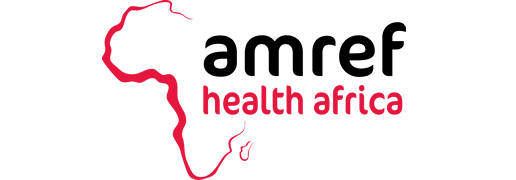The Ministry of Health in Kenya through the National Tuberculosis, Leprosy and Lung Disease Program (NTLD-Program) in partnership with Amref Health Africa in Kenya are on a mission to find missing Tuberculosis (TB) cases in communities through an initiative dubbed ‘Kenya Innovation Challenge TB Fund.’
Funded by the Global Fund to Fight AIDS, Tuberculosis and Malaria, this innovative initiative aims to find missing TB cases in the communities that have a high burden of TB and are underserved and link them to TB testing and treatment services.
Tuberculosis has been ranked as one of the prevalent contagious diseases in Kenya by the World Health Organisation (WHO).
Majority of people with TB symptoms do not seek care because of the assumption that their symptoms are not severe enough to require medical attention. The infectious bacterial disease is airborne and mainly affects the lungs. Research shows that any person who is ill with TB and not on treatment can infect between 10 and 15 people in close contact within a single year, thus posing a challenge in TB control.
Following a competitive process, nine organisations were identified to implement their innovative solutions for the Kenya Innovation Challenge TB Fund that will enable to bridge the gap in TB case finding at the community level: Community Support Platform, Heroes Oasis Counselling Centre, NAIS Healthcare Limited, North Star Alliance, Partnership for a HIV Free Generation, Resources Oriented Development Initiative, KAPTLD, Sema Limited and TAC Health Africa.
‘’Amref Health Africa in Kenya is proud to be actively participating in shaping the national TB response through this innovative initiative aimed at increasing case finding, improving TB prevention, case holding and treatment. The 2016 National TB Prevalence Survey showed that community interventions contributed 18% of TB patients enrolled into treatment, far above the national target of 8%,” said Mr Benson Ulo, Global Fund TB Project Manager at Amref Health Africa in Kenya.
He further noted that through the support of Global Fund and other partners, Amref Health Africa in Kenya has achieved great success in contributing to the reduction of TB prevalence in Kenya.
‘’We look forward to a TB-free nation for sustainability of good health for all,’’ added Mr Ulo.
The National TB Prevalence Survey (2016) identified the key groups found to have a greater burden of TB as: men between the ages of 25 and 34 years, women above the age of 65
years and people living in urban settings. The survey further showed that 169,000 people fell ill with TB, but the number of TB cases identified and put on treatment in 2017 was 85,188.
The innovations developed by the selected organisations will enable to bridge the gap in TB case finding at the community level. These innovative approaches are:
1. Young But Effective – children leading the fight against TB through screening themselves and household members. Through this innovation by Community Support Platform, children will carry TB knowledge into their adult life and households thereby transforming the entire community.
2. Ice Cream For I-Screen – Institutionalizing self-screening in Homabay County. Users of the USSD platform for self-screening will receive incentives including: ice cream, mobile phones, airtime and T-shirts to encourage more people to use I-screen in TB screening. This is an innovation by Heroes Oasis Counselling Centre.
3. Arobaini Initiative – a Heroes Oasis Counselling Centre initiative that engages inmates in prison and prison staff and their families to screen for TB. TB champions among the inmates will identify inmates with signs and symptoms of TB and report to the next level in the chain and the clinical coordinator will arrange for samples to be collected, tested and treatment where necessary.
4. Smart TB Biometric System – Finding missing people with TB in urban settlements in Kajiado County through a technology backed unique identification system dubbed STuBS by NAIS Health Care. The system will be used to capture patient screening data, voucher redemption, tracking of samples, testing and treatment referral.
5. Tibika Jikinge – Finding missing people with TB among mobile populations by North Star Alliance. This will campion TB screening by use of peer led model through social networks and centres for mobilisation. The Tibika Jikinge champions will educate their peers and screen them at hotspots.
6. Closing TB Gap – TB screening among the target population who often do not receive these services such as inmates, prison and police staff including their families and industrial and plantation workers, an innovation by Resources Oriented Development Initiative.
7. TB Self-Screening – an innovation by KAPLTD where users are able to self-screen using mobile phones on a USSD platform. The targeted population include Men in the informal settlements and working in industries and transport (matatu) sector.
8. SELT-T – a person can self-screen for TB using an Automated TB screening Machine (ATSM) which is similar to the Automated Teller Machine, an innovation by Sema Limited. The ATM will be stationed at high traffic areas including huduma centers, railway terminus and passport control centres in Nairobi County.
9. Mobile Assisted TB Diagnosis – an innovation by TAC Health Africa that will run a 24hrs manned call centre where users can call and get screened for TB and linked to diagnostic and treatment services. This innovation will reach people whose working hours inhibit their health seeking behaviour.
10. TB screening in the matatu industry – an innovation by Partnership for a HIV free Generation that targets men in the public transport sector (drivers, conductors, touts) and those based at the squad points to persuade passengers to board vehicles, often drug users. The innovation will use peer to peer TB screening strategy to ensure that the culture of TB screening is mainstreamed among this population.

1 comment
These are great innovations. They need to be implemented.